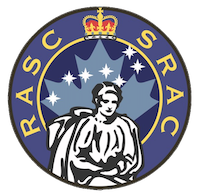George Ellery Hale (June 29, 1868 – February 21, 1938) was an American solar astronomer.
Hale was born in Chicago, Illinois. He was educated at MIT, at the Observatory of Harvard College, (1889–90), and at Berlin (1893–94). As an undergraduate at MIT, he is known for inventing the spectrohelioscope, with which he made his discovery of solar vortices. In 1908, he used the Zeeman effect with a modified spectrohelioscope to establish that sunspots were magnetic. Subsequent work demonstrated a strong tendency for east-west alignment of magnetic polarities in sunspots, with mirror symmetry across the solar equator; and that the polarity in each hemisphere switched orientation from one sunspot cycle to the next. This systematic property of sunspot magnetic fields is now commonly referred to as the "Hale-Nicholson law," or in many cases simply "Hale's law."
In 1890, he was appointed director of the Kenwood Astrophysical Observatory; he was professor of Astrophysics at Beloit College (1891–93); associate professor at the University of Chicago until 1897, and full professor (1897–1905). He was coeditor of Astronomy and Astrophysics, 1892–95, and after 1895 the original editor of the Astrophysical Journal, which he established with James Edward Keeler. He also served on the board of trustees for Science Service, now known as Society for Science & the Public, from 1921-1923.
Hale was a driven individual, who worked to found a number of significant astronomical observatories, including Yerkes Observatory, Mount Wilson Observatory, Palomar Observatory, and the Hale Solar Laboratory. Hale and his father arranged for the construction of the 40-inch Yerkes Telescope (1897), the largest refractor in the world. At Mount Wilson, he hired and encouraged Harlow Shapley and Edwin Hubble toward some of the most significant discoveries of the time with the 60-inch Telescope (1908) and 100-inch Hooker Telescope (1917), both of which were for a time the largest reflecting telescopes in the world. At the end of his life Hale set in motion the development of the 200-inch Hale Telescope on Palomar Mountain, which was completed in 1949 and was the largest telescope in the world until 1975. Hale was a prolific organizer who helped create a number of astronomical institutions, societies and journals. He also played a central role in developing the California Institute of Technology into a leading research university. After retiring as director at Mount Wilson, he built the Hale Solar Laboratory in Pasadena, California, as his office and workshop, pursuing his interest in the sun.
Hale suffered from neurological and psychological problems, including insomnia, frequent headaches, and schizophrenia, claiming to have regular visits from an elf who acted as his advisor. He used to take time off to spend a few months at a sanatorium in Maine. These problems forced him to resign as director of Mount Wilson.
At the fourth annual meeting on 1894-01-09, Professor G.E. Hale, Director of the Kenwood Physical Observatory, was elected a Corresponding Member of the Astronomical and Physical Society of Toronto. He wrote from Berlin, Germany: "Thank you for your very kind letter, which has just reached me via Chicago. Please convey to the Society my thanks for its offer to elect me a Corresponding Member. I highly appreciate the honour thus shown me, and shall take pleasure in accepting the relationship in case the election is made."
Dr. Hale was elected an Honorary Member of the Toronto Astronomical Society on 1900-05-01.

